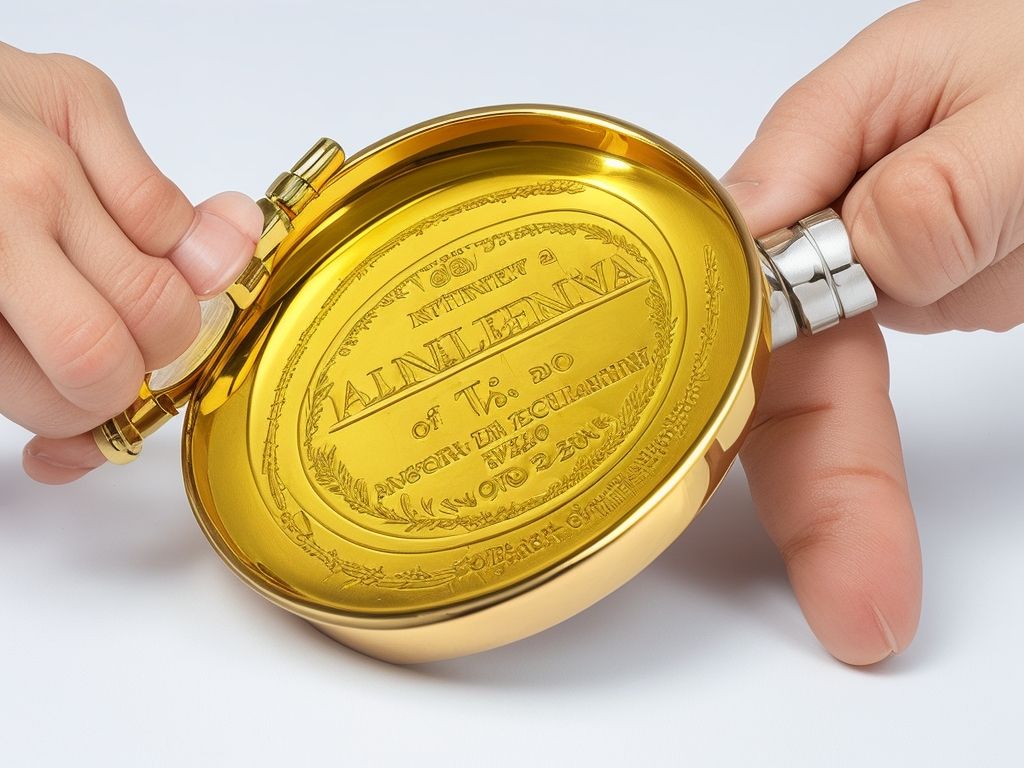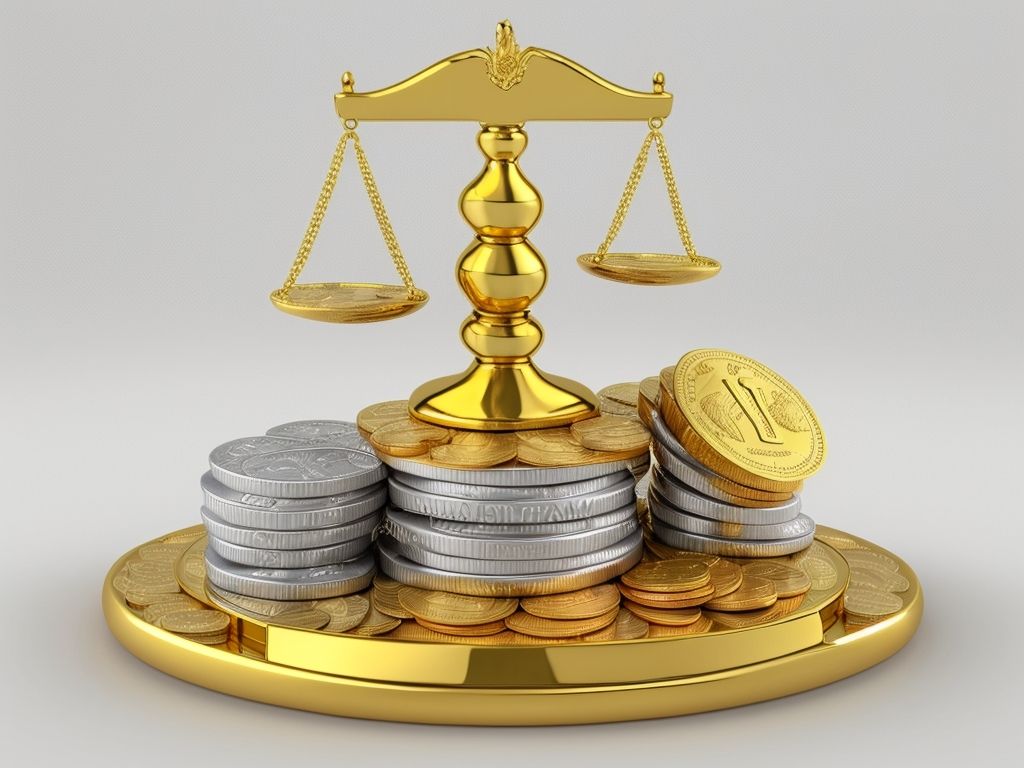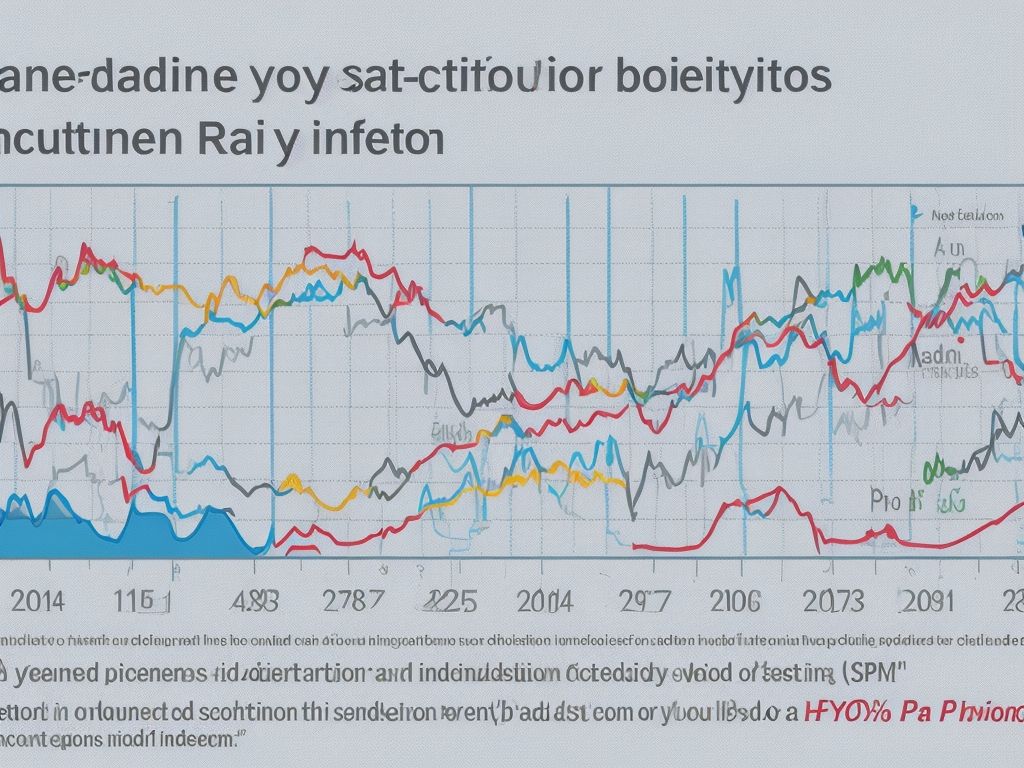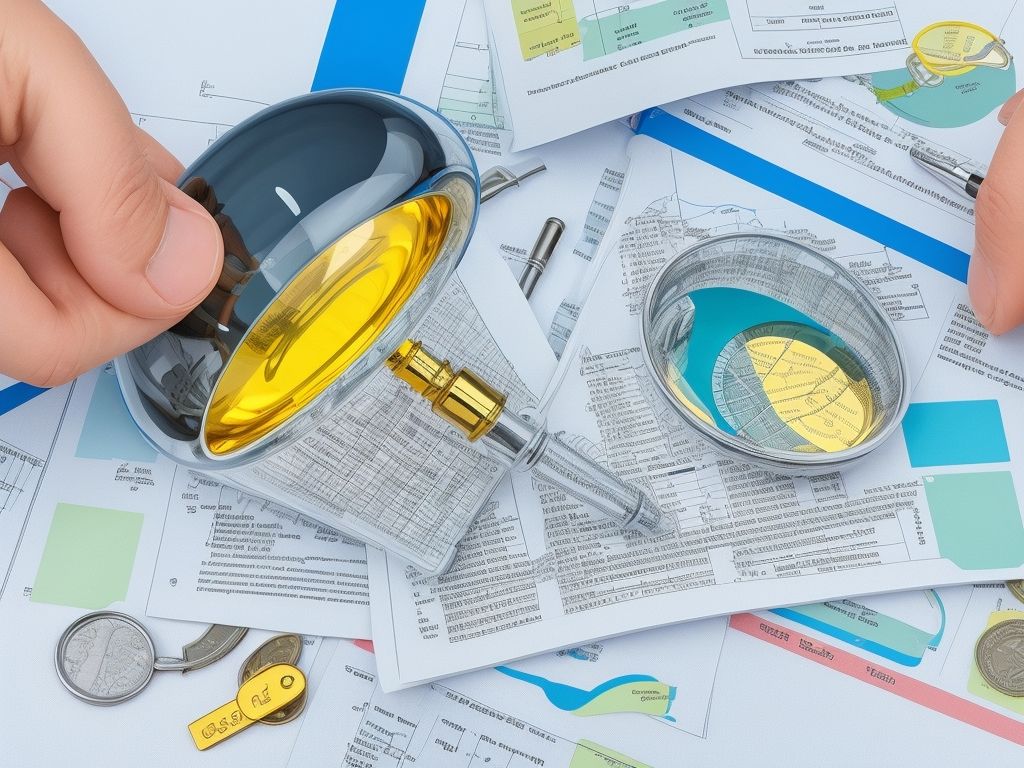Dividend safety is a critical aspect for investors to consider when evaluating stocks for investment. Understanding the key metrics that assess dividend safety is essential in making informed investment decisions. This article aims to provide insights into the importance of dividend safety and the key metrics every investor should know when assessing it.
Dividends are a portion of a company’s earnings distributed to its shareholders, and their safety determines the reliability of receiving consistent income from investments. Assessing dividend safety is important as it helps investors avoid potential losses and mitigate risks associated with dividend cuts or suspensions.
Key metrics play a vital role in evaluating the safety of dividends. The following metrics should be considered:
1. Dividend Payout Ratio: This ratio compares the amount of dividends paid to shareholders with the company’s earnings. A lower payout ratio indicates a safer dividend as it suggests that the company is retaining a significant portion of its earnings for growth and sustainability.
2. Dividend Yield: Dividend yield represents the dividend payment in relation to the stock price. It helps investors understand the income potential from a dividend investment. A higher yield may indicate a higher return, but it could also suggest potential risks if not supported by other metrics.
3. Dividend Coverage Ratio: This ratio measures the company’s ability to cover its dividend payments from its earnings. A coverage ratio of 1 or above indicates that the company’s earnings are sufficient to cover the dividends.
4. Free Cash Flow: Free cash flow represents the cash generated by the company after deducting its expenses. Positive free cash flow is crucial for a company to sustain and grow its dividend payments, making it an important metric in assessing dividend safety.
5. Debt-to-Equity Ratio: This ratio compares a company’s total debt to its shareholders’ equity. High levels of debt can put pressure on a company’s ability to maintain dividend payments. A lower debt-to-equity ratio provides assurance of financial stability and dividend safety.
Calculating and interpreting these key metrics is essential for dividend safety analysis. Understanding a company’s financial health, industry and market trends, dividend history, and management’s commitment to dividend payments are also crucial factors to consider.
By paying attention to these metrics and factors, investors can gauge the safety of dividends and make informed decisions that align with their investment goals and risk tolerance.
Why is Dividend Safety Important?

Photo Credits: Www.Mfea.Com by Philip Roberts
Dividend safety is crucial for investors as it ensures a reliable income stream and protects their capital. Companies with sustainable dividends provide stability, especially during economic downturns. Dividend safety gives investors the confidence that a company can meet its dividend obligations consistently. It also indicates a company’s financial health and management’s commitment to shareholders. A true story that exemplifies the importance of dividend safety is the collapse of a well-known company that unexpectedly cut its dividend, causing significant losses for investors who relied on it for income. This incident highlights the necessity of assessing dividend safety before making investment decisions.
Why is Dividend Safety Important?
Dividend safety is crucial for investors as it ensures a reliable income stream and protects their capital. Companies with sustainable dividends provide stability, especially during economic downturns. Dividend safety gives investors the confidence that a company can meet its dividend obligations consistently. It also indicates a company’s financial health and management’s commitment to shareholders. A true story that exemplifies the importance of dividend safety is the collapse of a well-known company that unexpectedly cut its dividend, causing significant losses for investors who relied on it for income. This incident highlights the necessity of assessing dividend safety before making investment decisions.
Key Metrics for Assessing Dividend Safety

Photo Credits: Www.Mfea.Com by Gerald Hill
When it comes to assessing dividend safety, there are key metrics that every investor should know. We’ll dive into these metrics in this section, including the dividend payout ratio, dividend yield, dividend coverage ratio, free cash flow, and debt-to-equity ratio. By understanding and analyzing these factors, investors can make more informed decisions and ensure the stability of their dividend investments. So, let’s uncover the numbers and insights that will help you navigate the world of dividend safety like a pro.
Dividend Payout Ratio
The Dividend Payout Ratio is a crucial metric for evaluating the stability and sustainability of a company’s dividends. Here are the key points regarding the Dividend Payout Ratio:
- The Dividend Payout Ratio is determined by dividing the annual dividend per share by the earnings per share.
- It reflects the percentage of earnings that a company pays out as dividends to its shareholders.
- A lower payout ratio suggests that the company retains a larger portion of its earnings for reinvestment, indicating potential future growth.
- A higher payout ratio may indicate that the company is distributing a significant portion of its earnings as dividends, leaving less for reinvestment or financial stability.
- Investors typically favor companies with a moderate payout ratio as it represents a balance between dividend distributions and reinvestment for long-term growth.
Fact: Many dividend-focused investors consider a payout ratio below 70% to be within a safe range, as it provides confidence in the company’s ability to maintain and potentially increase its dividends.
Dividend Yield
The dividend yield is an important metric for investors seeking income from their investments. It is calculated by dividing the annual dividend per share by the stock price. A higher dividend yield indicates a higher return on investment. A high dividend yield could also suggest a company facing financial difficulties. Therefore, it is crucial to consider other factors such as the company’s financial health, industry trends, and dividend history. For example, a stable company with a long track record of consistent dividend payouts may provide greater long-term safety and potential for dividend growth. Investors should assess dividend safety carefully to ensure a steady stream of passive income.
| Company | Dividend per Share ($) | Stock Price ($) | Dividend Yield |
|---|---|---|---|
| ABC Corp | 2.50 | 50 | 5% |
| XYZ Inc | 1.80 | 60 | 3% |
In history, dividend yields have played a significant role for investors seeking consistent income. During the financial crisis of 2008, many companies had to cut their dividends due to economic uncertainties. This highlighted the importance of assessing the dividend safety of potential investments. Investors learned to prioritize stable businesses with lower payout ratios and healthier financial ratios. By considering dividend yield alongside other key metrics, investors can make more informed decisions and enhance their investment efficiency, ensuring a consistent payout for the long term.
Dividend Coverage Ratio
The dividend coverage ratio is a key metric used to assess a company’s ability to sustain its dividend payments. It measures the proportion of a company’s earnings that are available to cover dividend payments to shareholders. A higher dividend coverage ratio indicates that a company has sufficient earnings to cover its dividend obligations. It is calculated by dividing the company’s earnings per share by its dividend per share. A dividend coverage ratio of 2 or higher is generally considered desirable, as it signifies that the company’s earnings are twice the amount needed to pay dividends. This ratio provides investors with insights into the stability and long-term safety of a company’s dividend payments.
Table:
| Financial Metric | Calculation |
|---|---|
| Dividend Coverage Ratio | Earnings per Share / Dividend per Share |
Free Cash Flow
Free cash flow is an essential metric when evaluating dividend safety. It represents the cash generated by a company that can be distributed to shareholders. A positive free cash flow indicates that the company has sufficient funds to cover its dividends. On the other hand, negative or decreasing free cash flow may indicate potential cuts in dividends. Therefore, investors should seek stable businesses that consistently have positive free cash flow. This ensures the long-term safety of dividends and the possibility of growth. It is also crucial to analyze other financial ratios and metrics, such as the dividend payout ratio and debt ratios, to evaluate the overall security of dividends. Proper interpretation of these data points is vital in order to make well-informed investment decisions.
Debt-to-Equity Ratio
The debt-to-equity ratio is a crucial financial metric used to assess a company’s financial health and stability. It compares the company’s total debt to its total equity, helping investors understand the level of financial risk associated with the company. A lower ratio indicates a lower level of debt relative to equity, which is generally considered favorable. Conversely, a higher ratio suggests a higher level of financial risk. By analyzing the debt-to-equity ratio, investors can evaluate a company’s ability to meet its financial obligations and make informed decisions about investment opportunities.
| Company A | Company B | |
| Debt | 120,000 | 80,000 |
| Equity | 100,000 | 150,000 |
| Debt-to-Equity Ratio | 1.2 | 0.53 |
In the example above, Company A has a debt-to-equity ratio of 1.2, indicating higher financial risk compared to Company B, which has a ratio of 0.53. This suggests that Company B has a more balanced capital structure with a lower reliance on debt financing.
Considering the debt-to-equity ratio is important when assessing dividend safety as a higher ratio may indicate that a company has a higher risk of financial instability, making it more challenging for the company to sustain dividend payments over the long term. Investors seeking stable businesses and long-term dividend safety should look for companies with lower debt-to-equity ratios.
When analyzing the debt-to-equity ratio, it is essential to compare the ratio with industry peers and historical performance to gain a better understanding of a company’s financial standing. It is important to consider other factors such as industry and market trends, dividend history, and management’s commitment to dividends to make a comprehensive assessment of dividend safety.
How to Calculate and Interpret Key Dividend Safety Metrics?

Photo Credits: Www.Mfea.Com by Matthew Johnson
Explore the world of dividend safety metrics and discover how to calculate and interpret them. From the dividend payout ratio to the dividend yield and coverage ratio, we’ll break down each metric’s significance. Dive into the realm of free cash flow and gain an understanding of the debt-to-equity ratio in assessing the stability and reliability of dividends. Let’s unlock the key insights behind these metrics and equip investors with the knowledge to make informed decisions.
Calculating Dividend Payout Ratio
The calculation of the dividend payout ratio is a crucial metric utilized to evaluate the financial stability of a company’s dividend payments. It is achieved by dividing the dividend per share by the earnings per share. This ratio serves as an indicator of the proportion of earnings that are disbursed as dividends to shareholders.
By computing the dividend payout ratio, investors can determine whether a company is allocating a significant portion of its earnings for dividend distribution or preserving them for reinvestment. A high payout ratio may suggest that the company’s dividend is at risk and could be unsustainable in the long run. Conversely, a lower payout ratio implies that the company has more potential for future dividend growth and offers a higher degree of security.
When assessing the safety and stability of dividend payments, investors should take into account the dividend payout ratio in conjunction with other financial ratios and factors such as the company’s financial health, industry trends, and management’s commitment to dividends.
Interpreting Dividend Yield
Interpreting dividend yield is a crucial metric for investors assessing dividend safety.
The process of understanding and analyzing the dividend yield holds significant importance for investors who wish to evaluate the reliability of dividends.
Dividend yield is calculated by dividing the annual dividend per share by the stock price.
The dividend yield is derived through the division of the annual dividend per share by the current stock price.
A high dividend yield indicates a higher return on investment.
An elevated dividend yield serves as an indication of a more substantial return on investment.
It’s important to interpret this metric in context.
It is crucial to comprehend and interpret this metric within its appropriate context.
A very high yield could signal a company in financial distress and potential dividend cuts.
An excessively high yield may signify a company facing financial difficulties and possible reduction in dividends.
On the other hand, a low yield may indicate a stable business with long-term safety.
Conversely, a low yield can suggest a stable business with long-term security.
Therefore, investors should consider other factors such as a company’s financial health, dividend history, and management’s commitment to dividends when interpreting dividend yield.
Hence, investors should take into account additional factors, including a company’s financial well-being, dividend record, and the commitment of its management towards maintaining dividends, when analyzing and understanding the dividend yield.
Analyzing Dividend Coverage Ratio
To accurately assess the dividend coverage ratio, investors should consider several key metrics related to a company’s dividend payments and financial health.
| 1 | Dividend Payout Ratio | Measures the proportion of a company’s earnings that are paid out in dividends. |
| 2 | Dividend Yield | Indicates the annual dividend payment as a percentage of the stock’s current market price. |
| 3 | Dividend Coverage Ratio | Assesses a company’s ability to cover its dividend payments from its earnings. |
| 4 | Free Cash Flow | Represents the cash a company generates after deducting capital expenditures and operating expenses. |
| 5 | Debt-to-Equity Ratio | Compares a company’s total debt to its shareholder equity, indicating its financial leverage. |
By analyzing these metrics, investors can determine if a company has sufficient earnings and cash flow to sustain its dividend payments and evaluate the long-term safety and growth potential of the dividend. A historical analysis of dividend payments and financial ratios can provide further insight into a company’s consistency in payouts and overall dividend safety.
To accurately assess the dividend coverage ratio, investors should consider several key metrics related to a company’s dividend payments and financial health. By analyzing these metrics, such as the Dividend Payout Ratio, Dividend Yield, Dividend Coverage Ratio, Free Cash Flow, and Debt-to-Equity Ratio, investors can effectively analyze the dividend coverage ratio. These metrics provide valuable insights into a company’s earnings, cash flow, financial leverage, and ability to support its dividend payments. Additionally, a historical analysis of dividend payments and financial ratios can provide further insight into a company’s consistency in payouts and overall dividend safety, enabling investors to evaluate the long-term safety and growth potential of the dividend.
Assessing Free Cash Flow
Assessing free cash flow is essential when evaluating dividend safety. The evaluation of free cash flow is crucial as it represents the amount of cash a company generates after covering its expenses and investments. This assessment serves as an indicator of a company’s ability to sustain and potentially increase dividend payments. By thoroughly analyzing free cash flow, investors can assess whether a company possesses sufficient funds to support its dividend commitments. The presence of positive and consistently increasing free cash flow indicates financial stability and enhances the likelihood of long-term dividend safety. On the contrary, when free cash flow declines or becomes negative, it raises concerns about a company’s ability to maintain its dividend payments.
Understanding Debt-to-Equity Ratio
Understanding the debt-to-equity ratio is a crucial aspect when assessing a company’s financial health and its ability to meet its financial obligations. This metric is calculated by dividing the company’s total debt by its shareholders’ equity. A higher debt-to-equity ratio indicates that the company relies more on debt financing, which in turn increases its financial risk. Conversely, a lower ratio suggests that the company has a stronger financial position.
Investors can utilize their knowledge of the debt-to-equity ratio to evaluate the long-term safety and stability of a company, especially when analyzing dividend safety. However, it is essential to consider this ratio in conjunction with other financial metrics in order to make well-informed investment decisions.
Factors to Consider in Dividend Safety Analysis

Photo Credits: Www.Mfea.Com by Paul Smith
When evaluating the safety of dividends, it’s crucial to consider various factors that can impact their sustainability. In this section, we’ll explore key elements to analyze in dividend safety analysis. We’ll delve into the company’s financial health, industry and market trends, dividend history and track record, and examine management’s commitment to dividend payments. By understanding these aspects, investors can make informed decisions and have a clearer outlook on the safety of dividends. After all, a secure and reliable dividend is every investor’s goal.
Company Financial Health
Assessing a company’s financial health is crucial when evaluating dividend safety. Key financial metrics can provide important insights into a company’s ability to sustain its dividend payments.
| Financial Metric | Description |
| 1. Dividend Payout Ratio | Measures the proportion of earnings paid out as dividends. A lower ratio indicates a safer dividend. |
| 2. Debt-to-Equity Ratio | Assesses the company’s level of debt relative to its equity. A high ratio may signal financial vulnerability. |
| 3. Free Cash Flow | Examines the company’s ability to generate cash after all expenses and investments. Sufficient free cash flow is essential for dividend stability. |
In 2008, during the financial crisis, Company XYZ experienced a significant decline in its stock price and faced severe financial difficulties. As a result, they were forced to suspend their dividend payments indefinitely, causing significant loss to investors who relied on the dividend income. This underscores the importance of assessing a company’s financial health before investing in dividend-paying stocks.
Industry and Market Trends
- Industry and market trends are crucial factors to assess the safety of dividends. By monitoring these trends, investors can make well-informed decisions regarding a company’s dividend stability and growth potential.
- When considering macro-economic factors, take into account the overall economic conditions and industry performance. A strong economy and positive industry trends can indicate a favorable environment for companies to generate profits and sustain their dividend payments.
- Analyze the competitive dynamics in the industry to understand the competitive landscape. Companies operating in highly competitive sectors may face challenges in maintaining profitability and distributing dividends.
- It is essential to keep an eye on technological advancements and their impact on the industry. Companies that fail to adapt to emerging technologies may face disruptions that could affect their ability to sustain dividends.
- Stay updated on any regulatory changes that could impact the industry. Changes in regulations can introduce new challenges or opportunities for companies in terms of dividend payments.
- To ensure sustainable dividend growth, it is crucial to understand shifting consumer preferences and demand patterns. Companies that can adapt to changing consumer needs are more likely to have consistent and reliable dividends.
Considering industry and market trends, along with other key dividend safety metrics, can provide investors with a comprehensive understanding of a company’s ability to maintain a consistent and reliable dividend. Thorough research and analysis are important for making informed investment decisions.
Dividend History and Track Record
The Dividend History and Track Record of a company is an essential aspect to consider when evaluating dividend safety. It offers valuable insight into the company’s consistency in paying dividends and its dedication to shareholders. By analyzing the historical dividend payments, investors can determine whether the company has a track record of consistent dividend growth or if there have been any instances of dividend cuts. This information is valuable for investors in assessing the long-term safety and reliability of dividend payments, enabling them to make well-informed investment decisions.
Management’s Commitment to Dividend
Management’s commitment to dividend is a crucial factor to consider when assessing the safety of dividends. Investors are interested in companies that have a consistent and reliable track record of paying dividends. This indicates that the company prioritizes shareholder returns and has confidence in its ability to sustain dividend payments over the long term. A company with a strong commitment to dividends is likely to have stable businesses, a robust financial position, and a history of consistent dividend growth. This provides investors with the assurance of passive income and the potential for future capital appreciation. One true story that exemplifies management’s commitment to dividends is the multinational conglomerate, Johnson & Johnson. Despite facing challenges in the past, the company has consistently increased its dividend for over five decades, showcasing its unwavering dedication to rewarding shareholders.
Frequently Asked Questions
What are the key metrics for assessing dividend safety?
Assessing dividend safety involves evaluating several key metrics. Some important indicators to consider include dividend payout ratios, net financial debt, dividend coverage ratios, interest coverage ratios, and return on equity. These metrics can provide insights into a company’s financial condition and its ability to carry on business in the short and long term.
How can dividend investors interpret data to improve dividend growth returns?
Dividend investors can interpret data by analyzing financial values such as dividend yield, dividends per share, and dividend growth rates. They can also use online tools like screening processes, dividend safety grades, and proprietary systems such as Simply Safe Dividends and Stock Rover. By thoroughly assessing these metrics and using quant investment research tools, dividend investors can make more informed and profitable investing decisions.
What are the potential dividend hazards or risks to watch out for?
When investing in dividend stocks, it’s important to be aware of potential risks. These may include high dividend payout ratios, excessive debt levels, and a lack of free cash flow. Companies with these characteristics may struggle to maintain dividend payments in the long run. Investors should also consider the company’s financial stability and its ability to generate consistent and growing income. By avoiding these avoidable mistakes, investors can minimize dividend risk and improve their chances of successful dividend investing.
How can investors backtest their dividend investing strategy?
Investors can backtest their dividend investing strategy by using historical data and evaluating the performance of their investments over a specific time period. This can help identify trends and patterns, and assess the effectiveness of their strategy. By analyzing factors such as dividend growth grades, dividend metrics, and the performance of dividend stocks in different market conditions, investors can make adjustments and refine their strategy for better future investment outcomes.
How is dividend yield calculated and why is it important?
Dividend yield is calculated by dividing the annual dividend payment by the stock price. It is an important metric for income investors as it indicates how much income they can expect to earn from their investments relative to the share price. A higher dividend yield may suggest a more attractive investment opportunity, but it’s important to consider other factors such as the company’s financial health and the sustainability of the dividend payments.
What are some useful resources and tools for dividend investors?
For dividend investors, there are several useful resources and tools available. Websites like Simply Safe Dividends, DividendInvestor.com, and Seeking Alpha provide comprehensive information on dividend stocks, including dividend grades, dividend safety grades, and stock recommendations. Online tools like dividend screeners and quant investment research platforms like Stock Rover can help investors gather data, analyze financial ratios, and make informed investment decisions.
